 |  |
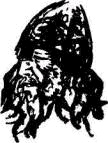 | HaraldFairhair. The Viking king Harald I vowed that he would let his hair grow until he had succeeded in uniting the country into one kingdom. In 885, after a battle near Stavanger, he was finally able to have it cut. Nevertheless he has continued to be known as Harald Fairhair. |
 |  |
 | Olav II was the king who Christianised Norway -by force. He was killed in battle in 1030. Before long he had become known as the great martyr of northern Europe, Saint Olav, and in many countries churches were built in his honour. Those Norwegians who did not wish to submit to the rule of the king founded a state on Iceland, and later colonised Greenland. One of them, Leiv Eriksson, sailed his longship as far as the coast of North America. |
 |  |
 | Roald Amundsen (1872-1928) was the first explorer to lead a successful expedition to the South Pole. He flew over the North Pole in an airship. And he was the first to sail through the North-West Passage. He lost his life attempting to save his Italian rival Nobile who had crashed on an expedition to the North Pole. |
 |  |
 | ThorHeyerdahl(1914-)is the great explorer of our day. On his balsa raft "Kon Tiki" he proved his theory that South American Indians had been able to cross the Pacific and settle in Polynesia, and bv means of the expedition of his papyrus boat "Ra" he showed that the ancient Egyptians could have crossed the Atlantic and settled in the Americas. |
 |  |
 | Fridtjof Nansen (1861-1930) was a polar explorer, artist, scientist, andpolitician.He crossed the Greenland icecap on skis. Later, in theexplorationship "Fram", he drifted in the Dack ice of the Arctic Ocean and proceeded to try to reach the North Pole on foot. In 1905 he became Norway's first ambassador in London after the dissolution of the Union with Sweden, and after the First World War he came to symbolise work for peace in the world. Under the auspices of the Leaeue of Nations he achieved the repatriation of millions of prisoners of war, he helped the fight against starvation in Russia, and supported the Armenians in their liberation struggle. He was awarded the Nobel Peace Prize in 1922. |
 |  |
 | Bjernstjeme Bjomson (1832-1910), poet and politician,wrote the wordsofNorway's national anthem. He campaigned for the right of small nations to be free. As playwright he was awarded the Nobel Prize for Literature. |
 |  |
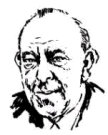 | Trygve Lie A Norwegian who played an important role more recently in the international political arena was Trygve Lie (1896-1968). He was the first Secretary General of the United Nations. |
 |  |
 | Many of the greatest names are to be found in the arts. The composer Edvard Grieg (1843-1907) developed the harmonies and sounds of Norwegian folk music in his works, which are among themostfrequently played in the world. |
 |  |
 | Edvard Munch (1863-1944), with his bold painting technique and use of colour, depicted the fear and loneliness that can haunt human beings, but he also painted joy and love, life as well as death. |
 |  |
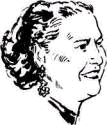 | Kirsten Flagstad The soprano Kirsten Flagstad (1895-1%2) has been called "the voice of the century". She successfully expressed the powerful drama of Richard Wagner's operas, and has inspired later operatic stars. |
 |  |
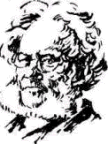 | His great contemporary Henrik Ibsen (1828-1906) won no Nobel prize. In his plays he exposed the deepest recesses in the human mind, and the hypocrisy in society. He could, however, also be a humorist, and he had a unique ability to create eminentlyquotable, ringing phrases. Ibsen is relevant to the modem stage because, looking beyond his own day, he took up the vital issues of responsibility and freedom, cowardice and courage, and the consequences of moral decisions. |
 |  |

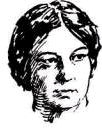 | Probably the most outstanding writers of our own century have been KnutHamsun (1859-1952) and Sigrid Undset (1882-1949), both of whom were awarded Nobel Prizes for Literature. Hamsun roamed the world and tried his hand at various jobs before pouring out his charm and his talent as lyricist in brilliant and humoristic depictions of the human mind, combining stylistic mastery withpsychological insight. Sigrid Undset wrote novels about the Middle Ages, an4 contemporary novels which took up the themes of anger and guilt, and the liberation of women. |
 |  |
 | Recently, too, women have contributed to making Norway better known. Sonia Henie (1912--1969) was the greatest ice skater of all time, winning 10 world championships and 3 Olympic gold medals. She became a film star in the USA, and invented ice shows. Eventually she returned to Norway where she, together with her husband, endowed the nation with a centre for modem art, which is just outside Oslo. |
 |  |
 | Crete Waitz (1953-) is the long-distance runner who has shown women how to run marathons. She has been world champion, and holds a number of records. |
 |  |

